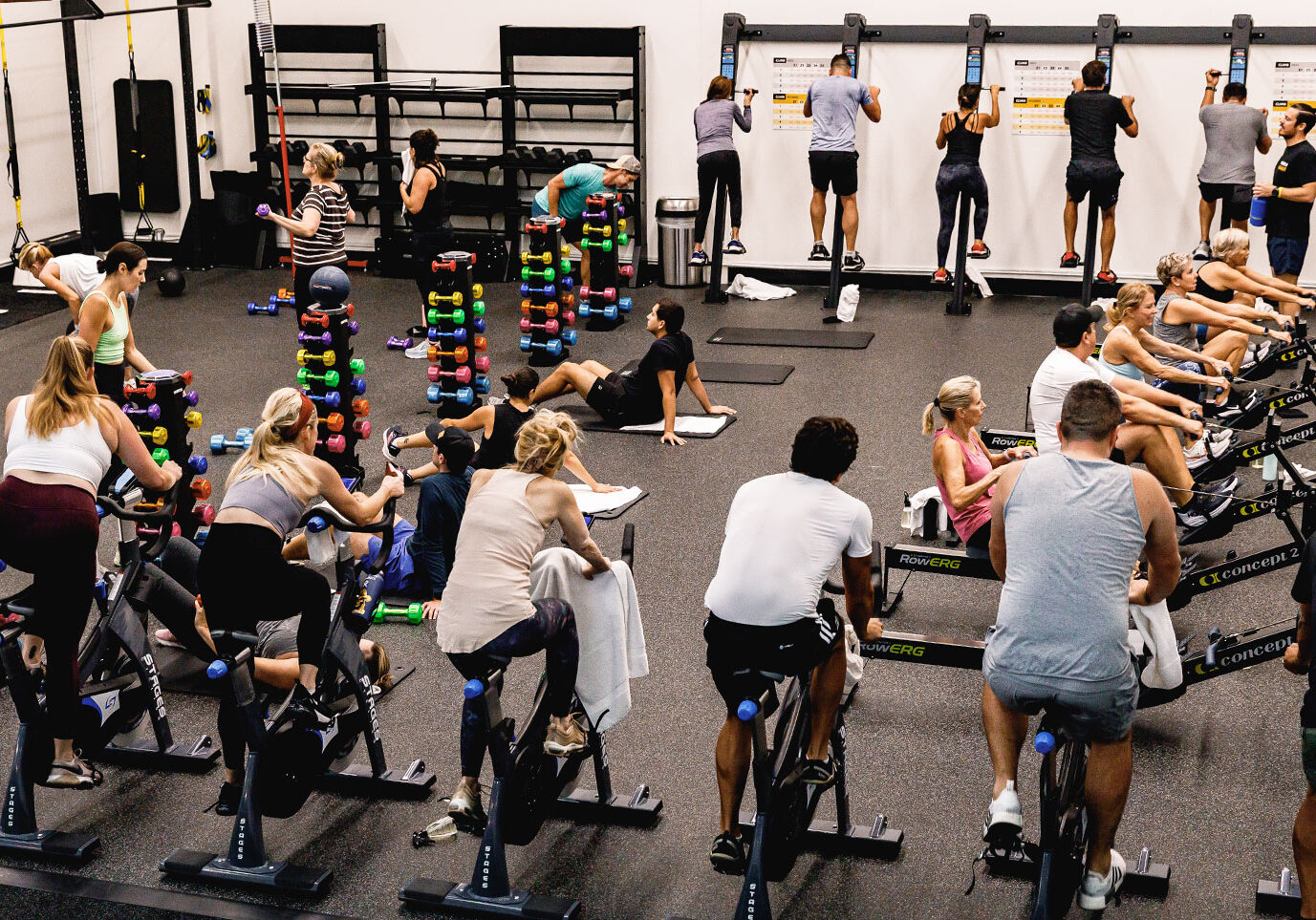No matter where you are in your fitness journey, understanding heart rate zones can help you optimize your sweat sessions and hit cardiovascular benchmarks. In this blog, you will learn the five heart rate zones, how to find your target heart rate for each, and how to achieve accuracy.
What Are Heart Rate Zones?
Whether your go-to exercise is a morning dog walk, taking the stairs at work, or an intense KILLER B X SWELL class, any movement does your body good. However, if you want to make the most of your workout or have certain goals in mind, it’s smart to get strategic.
This is where finding your heart rate zone comes in. The heart rate zone is the percentage of your maximum heart rate, indicating the intensity at which you’re working out. There are five zones ranging from zone 1 (least intense) to zone 5 (highest intensity). Each zone has different fuel sources. For example, exercising in zones 1 to 3 burns fat, while working out in zones 4 and 5 burns proteins and carbohydrates. So, pushing yourself to maximum capacity doesn’t necessarily equate to weight loss or building endurance.
How to Get in the Zone
Grab your calculator because finding your target heart rate for each zone requires some math. To get started, calculate the following:
- Maximum heart rate: 220 – [your age]
- Resting heart rate: You can use a heart rate monitor to tell you this, or, in the morning, feel your pulse and count the beats per minute while you’re at rest. It’s generally between 60 and 100.
- Heart rate reserve: Maximum heart rate – resting heart rate
- % zone intensity: Zone 1 = 50%, Zone 2 = 60%, Zone 3 = 70%, Zone 4 = 80%, Zone 5 = 90%
To find your target heart rate for each zone, plug the above results into the following equation:
Heart rate reserve x % zone intensity + resting heart rate = [target heart rate bpm]
For example, let’s say a 37-year-old has a maximum heart rate of 183 and a resting heart rate of 79. Therefore, their heart rate reserve would be 104. To find what their target heart rate should be for zone three, we’ll calculate the following:
104 x 0.7 + 79 = 151.8 (152 bpm)
Knowing your target heart rate for each zone will help you adjust your workouts, protect your cardiovascular health, and track increases or decreases in your athletic performance.
Zoning In
Have you ever wondered if the heart rate information displayed on cardio machines is accurate? Unfortunately, it’s not. The best way to get precise heart rate measurements is through a heart rate monitoring device or a cardiovascular stress test administered by your doctor. Both options can tell you your exact resting and maximum heart rate, so you know that your target heart rate zones are correct!
Optimize Your Heart Rate Zones at Santa Barbara Athletic Club
Listening to your body is just as important as calculating your heart rate zones. Ultimately, any activity that raises your heart rate above resting and makes you feel good is sufficient for maintaining a healthy lifestyle. As with most habits, consistency is key. Keep yourself on track by checking out the Santa Barbara Athletic Club class schedule, which features various classes to suit all fitness levels. Not a member? Join now and receive one month free!











